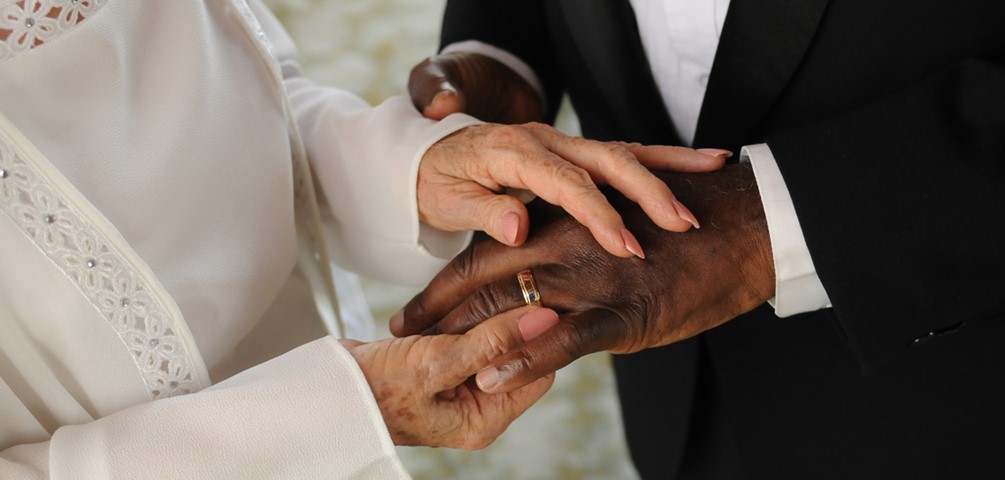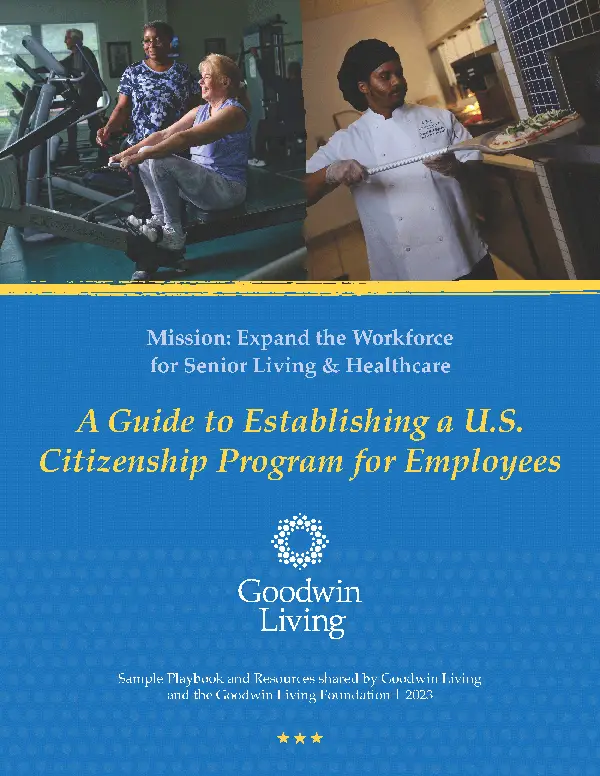
Diversity Equity Inclusion & Belonging - June 9, 2023
by Judith Kaufmann, GHBC Resident
Loving Day – it sounds like one of those Hallmark holidays, made up to sell greeting cards. Is it about celebrating love itself or does it urge all of us to be more loving people?
The latter is closer to the truth but not the whole story. Loving Day1 celebrates June 12, 1967, when the Supreme Court unanimously struck down miscegenation laws that prohibited people of different races from marrying or cohabitating. The suit was brought by Richard and Mildred Loving, hence the name. Richard Loving was White, Mildred Jeter was Black. They married in 1958 in Central Point, Caroline County, Virginia. After their marriage, they were arrested and convicted of violating Virginia’s Racial Integrity Act; their sentence was suspended on condition they leave Virginia. They moved to D.C. but later, in 1964, when they wanted to return to Central Point, they filed the suit that led to the Supreme Court decision.
Forty years after the Loving decision, Mildred Loving issued a statement that said, in part, “not a day goes by that I don’t think of Richard and our love, our right to marry, and how much it meant to me to have that freedom to marry the person precious to me, even if others thought he was the ‘wrong kind of person’ for me to marry. I believe all Americans, no matter their race, no matter their sex, no matter their sexual orientation, should have that same freedom to marry. Government has no business imposing some people’s religious beliefs over others. Especially if it denies people’s civil rights.”
My husband and I are beneficiaries of the Supreme Court decision. We married in 1981, less than two decades after it was issued. When we married, Gallup polling2 showed that only about a third of the country approved of interracial marriage, up from only 4% in 1958, when the Lovings were married. A colleague of mine thought I was incredibly brave. I didn’t feel that way; like Mildred and Richard Loving, we “loved each other and we got married.”
Gallup’s polling in 2021 showed that 94% of Americans now approve of interracial marriage. It’s important to note, however, that it was not until 1997 that a majority of White adults approved of interracial marriage. It was not until 2021 that the percentage of White and non-Whites approving of interracial marriages was almost identical; until then Non-White Americans had consistently been more approving.
I thought of the Loving decision when we recently celebrated our Black great-niece’s engagement to a White man. I think of the Lovings when I see, in the GHBC dining venues, the children and grandchildren of our residents, a rainbow of mixtures. I am inspired by the courage and love of Richard and Mildred Loving to continue my efforts to allow “all Americans, no matter their race, no matter their sex, no matter their sexual orientation,” to have their full rights to marry, to love and to live full and fulfilling lives.
by Nathalia Salvatierra
Growing up in culturally diverse Northern Virginia, I was fortunate to be immersed in a vibrant tapestry of different backgrounds, races and ethnicities. This rich environment fostered a deep sense of inclusivity and allowed me to appreciate the diverse fabric of our nation.
However, my experiences outside of Northern Virginia offered a unique perspective on the cultural diversity that exists across America. One particular instance stands out—my time in Charleston, West Virginia. Charleston, while being a vibrant city full of lovely people, presented a distinct contrast to the cultural melting pot I had grown accustomed to in Northern Virginia.
Upon arriving in Charleston, it became evident that the city’s demographic makeup was different. The population was less diverse, and the representation of various ethnicities and cultures was noticeably limited. I stood out as a person of Hispanic heritage right away, as the diversity I had become accustomed to was not as prevalent in this region.
During my time in Charleston, I met my husband Michael, who was born and raised in the area. Our backgrounds couldn’t have been more different. Having grown up in a less culturally diverse environment, Michael had never been exposed to Hispanic culture before our encounter. Nonetheless, our shared values, beliefs and love for each other bridged any perceived divides. It was as though we had always known each other, transcending the boundaries of race and background.
Loving Day holds immense importance as it commemorates the legalization of interracial marriage, a watershed moment that allowed couples like me and Michael to unite freely and build a life together. Without this landmark law, we might not have had the opportunity to nurture our love and create a life filled with mutual respect and understanding.
Despite progress, it is vital to acknowledge that biracial couples still face challenges today. Some families may struggle to accept relationships that cross racial boundaries, and individuals in these relationships may encounter prejudice or discrimination from others. While Michael’s family was supportive of our marriage, we were aware of acquaintances in the area who experienced estrangement from their families due to marrying someone from a different race.
Days like Loving Day are powerful reminders of what truly matters in a marriage: love, compassion and the freedom to choose our life partners without judgment or discrimination. The laws that have been passed to legalize interracial marriage have profoundly changed and impacted countless lives, including my own. Because of these laws, couples like me and Michael can exist and thrive, breaking down barriers and promoting a more inclusive and accepting society.
Celebrating Loving Day goes beyond acknowledging the historical significance of legalizing interracial marriage. It is a time to reflect on the power of love and recognize the ongoing challenges that interracial couples may face. By continuing to champion diversity, equality and understanding, we can strive to create a world where love knows no boundaries.
_______________________________________________________
Goodwin Living DEI Committee: Statement of Purpose: Educate, Embrace, and Empower team members, residents, members* and all served by Goodwin Living to support Diversity, Equality and Inclusion.
Goodwin Living DEI Committee Desired Outcome: The Diversity, Equality, and Inclusion Committee (DEI) will seek open and honest communication and collaboration that will inform and celebrate the age, culture, ethnicity and sexual orientation of team members, residents, members* and all served by Goodwin Living without bias. *Members include Priority Club members and Goodwin Living At Home.
Questions or comments? Please contact us DEI@GoodwinLiving.org.
